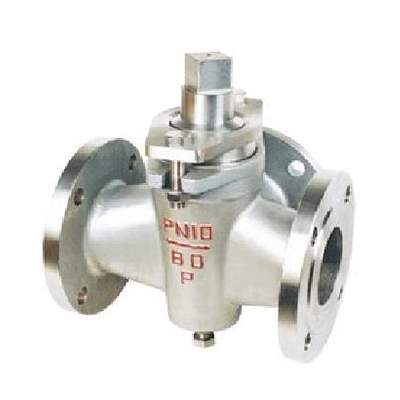Welcome to My Blog!
Before we dive into the content, if you’re interested in our products or have any questions, please feel free to visit our Contact Us page on the website. Our team is ready to assist you with inquiries, orders, or any support you may need.
Now, let’s get started on our journey together. I hope you find the content here insightful, engaging, and valuable.
Choosing the right 2 way plug valve for your project is crucial for ensuring efficient flow control, durability, and long-term reliability. Whether you are designing an industrial piping system, handling chemicals, or working in water treatment, selecting the right valve can save time, reduce maintenance costs, and improve system performance. This guide will help you understand the key considerations, types, materials, and applications of 2 way plug valves, so you can make an informed decision. By the end, you will know how to select a valve that meets your operational needs and complies with industry standards.
What is a 2 Way Plug Valve?

A 2 way plug valve is a type of quarter-turn valve that allows fluid to flow in one or both directions through a simple plug mechanism. Unlike ball valves or gate valves, a plug valve features a cylindrical or conical plug with one or more hollow passageways that align with the inlet and outlet ports. When the plug is rotated, the flow path opens or closes, providing precise control over fluid flow.
2 way plug valves are commonly used in industries such as chemical processing, oil and gas, water treatment, HVAC, and even food and beverage production. Their compact design, low pressure drop, and reliable sealing make them a popular choice for many industrial applications. For example, in chemical plants, plug valves are often chosen for their ability to handle corrosive fluids and abrasive slurries without leaking.
Additional Benefits:
- Minimal leakage due to tight sealing design.
- Quick quarter-turn operation compared to multi-turn valves.
- Can handle both liquid and gas applications effectively.
Key Advantages of Using a 2 Way Plug Valve
2 way plug valves offer several advantages over other valve types:
- Durability and Material Benefits: Many 2 way plug valves are made from stainless steel, brass, or bronze, offering excellent corrosion resistance and long service life. High-quality valves can withstand extreme temperatures and pressures, making them suitable for demanding industrial applications.
- Easy Maintenance and Operation: With fewer moving parts than ball or globe valves, plug valves are easier to maintain. Regular inspection and lubrication are typically sufficient to keep them operating smoothly.
- Flow Control Precision: The plug design allows for precise control of fluid flow, which is essential for processes requiring exact flow regulation, such as chemical dosing or gas mixing.
- Versatility: 2 way plug valves can handle various media including water, oil, steam, gases, and chemicals, making them highly adaptable to different industrial environments.
- Compact Design: Their small footprint makes installation in tight spaces easier, which is particularly valuable in retrofit or constrained piping systems.
Types and Materials of 2 Way Plug Valves

When selecting a 2 way plug valve, it is important to consider both the material and the design:
- Stainless Steel vs Brass vs Other Materials: Stainless steel valves are ideal for high-pressure, high-temperature, or corrosive environments. Brass valves are commonly used in water systems and low-pressure applications due to their affordability and corrosion resistance. Plastic plug valves are sometimes used for low-pressure chemical or water systems.
- Full Bore vs Standard Bore Designs: Full bore valves allow maximum flow with minimal pressure drop, which is critical in pipelines where maintaining flow efficiency is essential. Standard bore valves are smaller and more cost-effective, suitable for applications where precise flow control is less critical.
- Manual vs Electric Actuated Valves: Manual plug valves are straightforward to operate and cost-effective, while electric actuated plug valves provide automation, remote control, and precise positioning, which is important in large-scale industrial facilities or hazardous environments.
Tip: Always choose materials compatible with the fluid type to prevent corrosion, erosion, or contamination, especially in chemical or food processing applications.
Factors to Consider When Choosing a 2 Way Plug Valve
Selecting the appropriate 2 way plug valve requires careful evaluation of several factors:
- Operating Pressure and Temperature: Verify that the valve can handle your system’s maximum pressure and temperature without deformation or leakage. Overestimating the pressure rating may increase cost unnecessarily, while underestimating can result in valve failure.
- Fluid Type and Compatibility: The valve material and seal type must be compatible with the media being controlled. For corrosive fluids, PTFE or EPDM seals are commonly used.
- Valve Size and Port Configuration: Ensure that the valve size matches your pipeline and that the port configuration supports your desired flow rate. Incorrect sizing can lead to pressure drop, cavitation, or inefficiency.
- Industry Standards and Certifications: Compliance with ISO, ANSI, API, or other relevant standards guarantees safety and quality. For critical industrial applications, always verify manufacturer certifications.
- Installation Environment: Consider factors like ambient temperature, vibration, and space limitations, which may affect valve selection and installation.
By considering these factors early, you can avoid costly replacements or maintenance issues later.
How to Install and Maintain Your 2 Way Plug Valve
Proper installation and maintenance are essential for extending the life of your 2 way plug valve:
- Step-by-Step Installation Guide: Ensure correct orientation, use proper gaskets and seals, and follow torque specifications. Avoid forcing the plug as it can damage the valve body or seal.
- Regular Maintenance Tips: Periodically lubricate the plug, check for leaks, and inspect seals. In high-temperature or corrosive environments, more frequent inspections may be required.
- Troubleshooting Common Issues: Issues like leaks, sticking plugs, or reduced flow are often caused by debris, corrosion, or improper installation. Cleaning, lubrication, or seal replacement usually resolves these problems.
Pro Tip: Keep a maintenance log to track inspections and replacements, which can help predict valve lifespan and optimize system reliability.
Comparing 2 Way Plug Valves with Other Valve Types
Understanding how 2 way plug valves compare to other valves can help you make a better choice:
- 2 Way Plug Valve vs Ball Valve: Plug valves are generally simpler, with fewer components and easier maintenance. Ball valves handle higher pressure but may require more space for installation.
- 2 Way Plug Valve vs Gate Valve: Gate valves are designed for fully open or fully closed applications and are slower to operate, whereas plug valves allow fast quarter-turn operation, saving time in control processes.
- Choosing the Best Valve for Your Project: Consider flow requirements, system pressure, maintenance accessibility, and budget constraints. In systems where flow precision and quick operation are critical, 2 way plug valves often outperform traditional gate or globe valves.
Where to Buy High-Quality 2 Way Plug Valves

When sourcing 2 way plug valves, consider the following:
- Online Suppliers and Industrial Distributors: Many manufacturers and distributors provide online catalogs with detailed specifications. Comparing multiple sources ensures you find the best match for your system requirements.
- Price Range and Cost Considerations: Stainless steel and electric actuated valves are generally more expensive than brass or manual valves. Factor in total cost of ownership, including maintenance and expected lifespan.
- Brand Recommendations: Reputable brands provide certifications, technical support, and warranty options. Well-known manufacturers often offer a wider selection of sizes and materials, ensuring you find the right valve for your project.
Conclusion
Choosing the right 2 way plug valve requires careful consideration of material, type, operating conditions, and maintenance requirements. By understanding the advantages, comparing alternatives, and consulting trusted suppliers, you can ensure optimal performance, safety, and long-term reliability for your project. Investing time in proper selection, installation, and maintenance will save costs, improve efficiency, and enhance overall system performance.
FAQ
What is a 2 way plug valve?
A 2 way plug valve is a quarter-turn valve that controls fluid flow using a cylindrical or conical plug with hollow passages to open or close the flow path.
How does a 2 way plug valve work?
Rotating the plug aligns its internal passage with the inlet and outlet ports, allowing fluid to flow in one or both directions.
What are the common applications of 2 way plug valves?
They are widely used in chemical plants, water treatment, oil and gas pipelines, HVAC systems, and industrial fluid control applications.
What materials are 2 way plug valves made of?
Common materials include stainless steel, brass, bronze, and sometimes plastic, chosen based on pressure, temperature, and fluid compatibility.
How do I maintain a 2 way plug valve?
Regularly inspect and clean the valve, lubricate the plug, and replace worn seals to ensure reliable performance and prevent leaks.
Need Help Choosing the Right 2 Way Plug Valve?
If you’re unsure about which 2 way plug valve is best for your system or project, our experts are here to help. Contact us today for a personalized consultation, and ensure your industrial or commercial piping system operates efficiently and reliably. Don’t wait until problems arise—get in touch now to optimize your flow control and protect your equipment!
